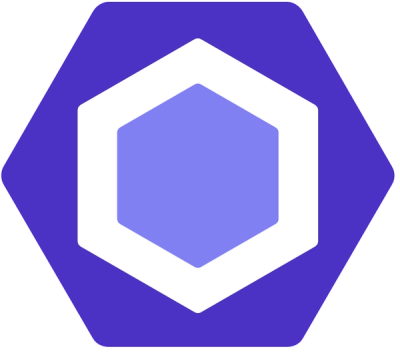
Security News
Follow-up and Clarification on Recent Malicious Ruby Gems Campaign
A clarification on our recent research investigating 60 malicious Ruby gems.
3scale is an API Infrastructure service which handles API Keys, Rate Limiting, Analytics, Billing Payments and Developer Management. Includes a configurable API dashboard and developer portal CMS. More product stuff at http://www.3scale.net/, support information at http://support.3scale.net/.
This library is distributed as a gem, for which Ruby 2.1 or JRuby 9.1.1.0 are minimum requirements:
gem install 3scale_client
Or alternatively, download the source code from github: http://github.com/3scale/3scale_ws_api_for_ruby
If you are using Bundler, please add this to your Gemfile:
gem '3scale_client'
and do a bundle install.
If you are using Rails' config.gems, put this into your config/environment.rb
config.gem '3scale_client'
Otherwise, require the gem in whatever way is natural to your framework of choice.
First, create an instance of the client:
ThreeScale::Client.new(service_tokens: true)
NOTE: unless you specify
service_tokens: trueyou will be expected to specify aprovider_keyparameter, which is deprecated in favor of Service Tokens:
client = ThreeScale::Client.new(provider_key: 'your_provider_key')
Because the object is stateless, you can create just one and store it globally.
Then you can perform calls in the client:
client.authorize(service_token: 'token', service_id: '123', usage: usage)
client.report(service_token: 'token', service_id: '123', usage: usage)
If you had configured a (deprecated) provider key, you would instead use:
client.authrep(service_id: '123', usage: usage)
NOTE:
service_idis mandatory since November 2016, both when using service tokens and when using provider keys
NOTE: You might use the option
warn_deprecated: falseto avoid deprecation warnings. This is enabled by default.
Starting with version 2.4.0 you can use two more options: secure and persistent like:
client = ThreeScale::Client.new(provider_key: '...', secure: true, persistent: true)
secureEnabling secure will force all traffic going through HTTPS.
Because estabilishing SSL/TLS for every call is expensive, there is persistent.
persistentEnabling persistent will use HTTP Keep-Alive to keep open connection to our servers.
This option requires installing gem net-http-persistent.
Authrep is a 'one-shot' operation to authorize an application and report the associated transaction at the same time. The main difference between this call and the regular authorize call is that usage will be reported if the authorization is successful. Read more about authrep at the active docs page on the 3scale's support site
You can make request to this backend operation using service_token and service_id, and an authentication pattern like user_key, or app_id with an optional key, like this:
response = client.authrep(service_token: 'token', service_id: 'service_id', app_id: 'app_id', app_key: 'app_key')
Then call the success? method on the returned object to see if the authorization was successful.
if response.success?
# All fine, the usage will be reported automatically. Proceeed.
else
# Something's wrong with this application.
end
The example is using the app_id authentication pattern, but you can also use other patterns such as user_key.
class ApplicationController < ActionController
# Call the authenticate method on each request to the API
before_filter :authenticate
# You only need to instantiate a new Client once and store it as a global variable
# If you used a provider key it is advisable to fetch it from the environment, as
# it is secret.
def create_client
@@threescale_client ||= ThreeScale::Client.new(service_tokens: true)
end
# To record usage, create a new metric in your application plan. You will use the
# "system name" that you specifed on the metric/method to pass in as the key to the usage hash.
# The key needs to be a symbol.
# A way to pass the metric is to add a parameter that will pass the name of the metric/method along
#
# Note that you don't always want to retrieve the service token and service id from
# the parameters - this will depend on your application.
def authenticate
response = create_client.authrep(service_token: params['service_token']
service_id: params['service_id'],
app_id: params['app_id'],
app_key: params['app_key'],
usage: { params['metric'].to_sym => 1 })
if response.success?
return true
# All fine, the usage will be reported automatically. Proceeed.
else
# Something's wrong with this application.
puts "#{response.error_message}"
# raise error
end
end
end
To authorize an application, call the authorize method passing it the service_token and service_id, as well as a supported pattern for application authentication:
response = client.authorize(service_token: 'token', service_id: 'service_id', user_key: 'user_key')
Then call the success? method on the returned object to see if the authorization was successful.
if response.success?
# All fine, the usage will be reported automatically. Proceeed.
else
# Something's wrong with this application.
end
If the service (provided with the token and its id, or otherwise the id if the provider key was specified at instantiation time) and the application are valid, the response object contains additional information about the application's status:
# Returns the name of the plan the application is signed up to.
response.plan
If the plan has defined usage limits, the response contains details about the usage broken down by the metrics and usage limit periods.
# The usage_reports array contains one element per each usage limit defined on the plan.
usage_report = response.usage_reports[0]
# The metric
usage_report.metric # "hits"
# The period the limit applies to
usage_report.period # :day
usage_report.period_start # "Wed Apr 28 00:00:00 +0200 2010"
usage_report.period_end # "Wed Apr 28 23:59:59 +0200 2010"
# The current value the application already consumed in the period
usage_report.current_value # 8032
# The maximal value allowed by the limit in the period
usage_report.max_value # 10000
# If the limit is exceeded, this will be true, otherwise false:
usage_report.exceeded? # false
If the authorization failed, the error_code returns system error code and error_message human readable error description:
response.error_code # "usage_limits_exceeded"
response.error_message # "Usage limits are exceeded"
To authorize an application with OAuth, call the oauth_authorize method passing it the service_token with service_id and the app_id.
response = client.oauth_authorize(service_token: 'token', service_id: 'service_id', app_id: 'app_id')
If the authorization is successful, the response will contain the app_key and redirect_url defined for this application:
response.app_key
response.redirect_url
To report usage, use the report method. You can report multiple transactions at the same time:
response = client.report(
service_token: 'token',
service_id: 'service_id',
transactions: [{app_id: '1st app_id', usage: { 'hits' => 1 }},
{app_id: '2nd app_id', usage: { 'hits' => 1 }}])
The app_id and usage parameters are required. Additionally, you can specify a timestamp of a transaction:
response = client.report(
:transactions => [{app_id: 'app_id',
usage: { 'hits' => 1 },
timestamp: Time.local(2010, 4, 28, 12, 36)}])
The timestamp can be either a Time object (from ruby's standard library) or something that quacks like it (for example, the ActiveSupport::TimeWithZone from Rails) or a string. Such string has to be in a format parseable by the Time.parse method. For example:
"2010-04-28 12:38:33 +0200"
If the timestamp is not in UTC, you have to specify a time offset. That's the "+0200" (two hours ahead of the Universal Coordinate Time) in the example abowe.
Then call the success? method on the returned response object to see if the report was successful.
if response.success?
# All OK.
else
# There was an error.
end
In case of error, the error_code returns system error code and error_message human readable error description:
response.error_code # "provider_key_invalid"
response.error_message # "provider key \"foo\" is invalid"
You can use our Rack middleware to automatically authenticate your Rack applications.
NOTE: this is deprecated. Please observe that there is no support for multiple services nor for service tokens.
require '3scale/middleware'
use ThreeScale::Middleware, provider_key, :user_key # or :app_id
FAQs
Unknown package
We found that 3scale_client demonstrated a not healthy version release cadence and project activity because the last version was released a year ago. It has 5 open source maintainers collaborating on the project.
Did you know?

Socket for GitHub automatically highlights issues in each pull request and monitors the health of all your open source dependencies. Discover the contents of your packages and block harmful activity before you install or update your dependencies.

Security News
A clarification on our recent research investigating 60 malicious Ruby gems.

Security News
ESLint now supports parallel linting with a new --concurrency flag, delivering major speed gains and closing a 10-year-old feature request.

Research
/Security News
A malicious Go module posing as an SSH brute forcer exfiltrates stolen credentials to a Telegram bot controlled by a Russian-speaking threat actor.